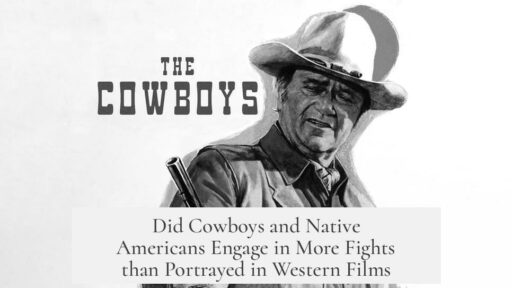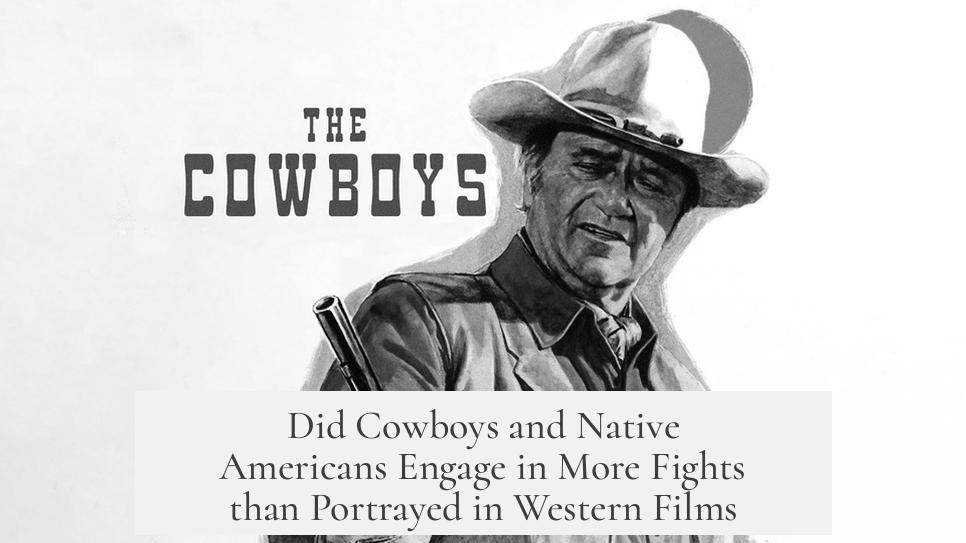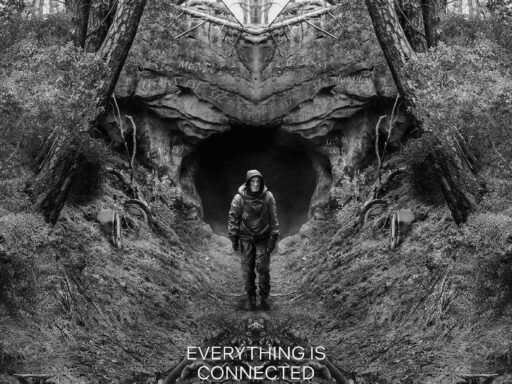The classic image of frequent violent clashes between “cowboys” and Native Americans, popularized by Western films and media, greatly exaggerates how often such conflicts actually occurred in history.
In reality, major fights involving Native Americans were primarily against government troops, not individual cowboys or ranchers. The U.S. Army and other federal forces engaged in campaigns and battles to control lands and suppress Native resistance. Opposing military forces represented organized, large-scale conflict, unlike the rare skirmishes involving cows or ranch hands.
While occasional fights happened between settlers or townsfolk and Native raiders, these encounters were far less common than movies depict. Many Native American raids focused on capturing livestock or goods rather than indiscriminate violence. Livestock theft was usually conducted quietly, especially at night, to avoid provoking armed gunfights. Since cattle are large and difficult to manage, rustling often targeted other animals like sheep or goats, especially those raised by Native groups such as the Navajo who had adopted ranching practices.
Moreover, ranchers and cowboys frequently did not cross paths with Native Americans. Trails for cattle drives were established and traversed regularly. Since the Great Plains were vast, and many Native groups were nomadic, chance encounters were unlikely. When cowboys did see Native Americans, they often described them as starving and suffering rather than hostile enemies. There is evidence that many cowboys felt sympathy toward Native Americans enduring starvation and broken treaty promises.
The cultural significance of the buffalo to many tribes also altered interactions. The buffalo was more valuable and culturally important than cattle, which reduced the incentive to steal cattle. Additionally, U.S. government policies restricted Native movement and confined many to reservations, causing hardship and hunger. This difficult reality did not foster regular violent conflict with cowboys.
Though direct armed clashes between cowboys and Native Americans were infrequent, there are historical instances worth noting. For example, in 1911, a group of Shoshone killed cattle to preserve food for winter, leading to a posse pursuing them and a deadly three-hour gunfight. In Texas, conflicts involving Texas Rangers, local ranchers, and Comanche raiders were more common, primarily centered on horse theft rather than cattle theft or broad-scale battles.
Most disputes and violence involving cowboys tended to arise among Euro-American settlers themselves. Townfolk often viewed ranchers as unruly and violent. Law enforcement and posses dealt more frequently with rustlers and range wars within settler communities than with Native groups.
| Aspect | Reality vs. Western Myth |
|---|---|
| Main Opponents of Native Americans | Government troops, rarely cowboys or ranchers |
| Frequency of Cowboy-Native Conflicts | Rare due to vast territory and limited encounters |
| Nature of Native Raids | Typically targeted goods quietly, not violent clashes |
| Cowboy Views of Native Americans | Often sympathetic to their plight and suffering |
| Internal Conflicts Among Settlers | More frequent than conflicts with Native Americans |
In summary, the Hollywood trope of “cowboys vs Indians” as constant adversaries misrepresents historical reality. Conflicts were uncommon and usually involved formal military forces or settler militias. Cowboys and Native Americans seldom engaged in large-scale or frequent battles. Livestock thefts or raids did occur but were typically conducted quietly to avoid gunfights. Cowboys often witnessed the hardships faced by Indigenous people and sometimes empathized with their suffering. When violent incidents happened, they overwhelmingly involved government soldiers, Texas Rangers, or posses rather than civilians on cattle drives.
- Native Americans mostly fought government troops, not cowboys or ranchers.
- Encounters between cowboys and Native Americans were rare due to vast plains and controlled trails.
- Raids for livestock or goods aimed to avoid armed violence, focusing on quiet thefts.
- Cowboys often sympathized with the starvation and struggles of Native Americans.
- Most violent conflicts involved soldiers or settlers, not direct cowboy-Native clashes.
Did cowboys and Native Americans fight as often as shown in classic western movies?
No. Actual fights were rare. Most violence involved government troops, not cowboys. Cowboys and Native Americans seldom met, and when they did, it was often peaceful or sympathetic.
Why were conflicts between cowboys and Native Americans uncommon?
They rarely crossed paths due to the vastness of the plains and regular trails. Cowboys often sympathized with Native Americans, who faced starvation and harsh government policies.
Was cattle rustling by Native Americans a cause of frequent gunfights with cowboys?
Rustling was usually done quietly, often at night, to avoid conflict. Gunfights over livestock theft were uncommon because cattle were hard to steal and both sides sought to avoid violence.
Who were Native Americans’ main opponents during the conflicts?
Native Americans most often faced fights with US government forces or posses. They rarely fought directly against cowboys, who were mostly ranchers and settlers.
Are there any notable examples of actual armed fights between cowboys and Native Americans?
Yes. One example is a 1911 event where a Shoshone family was pursued after killing cattle for food, resulting in a deadly fight. But such incidents were exceptions, not the norm.



